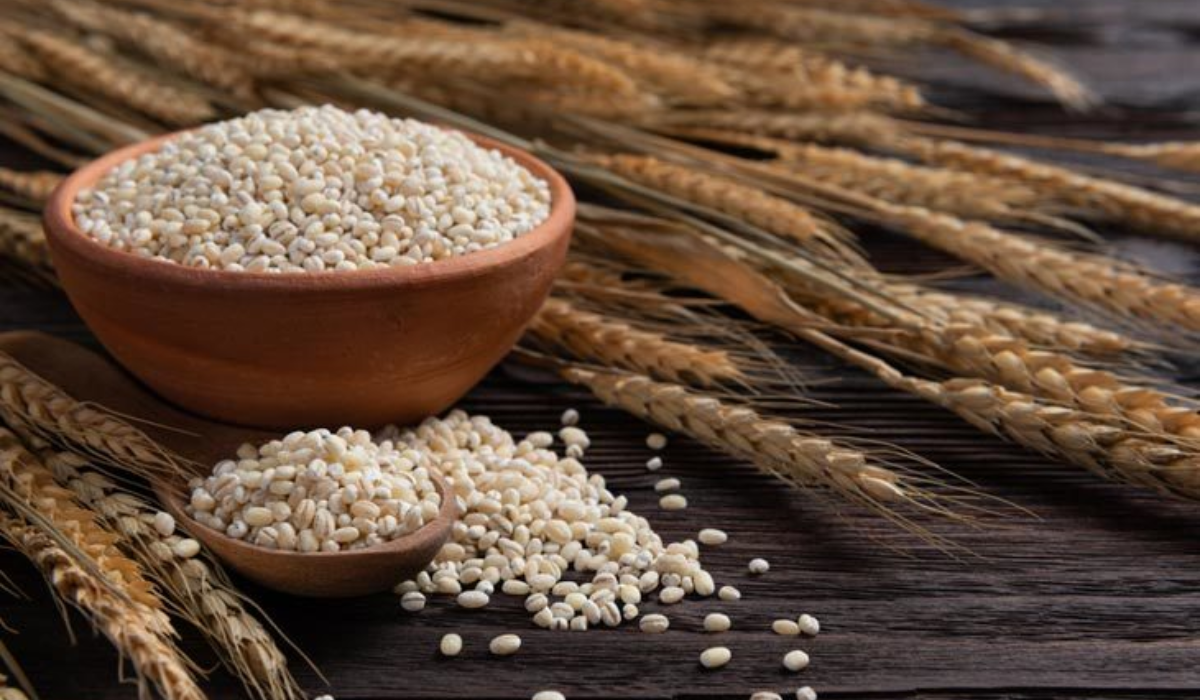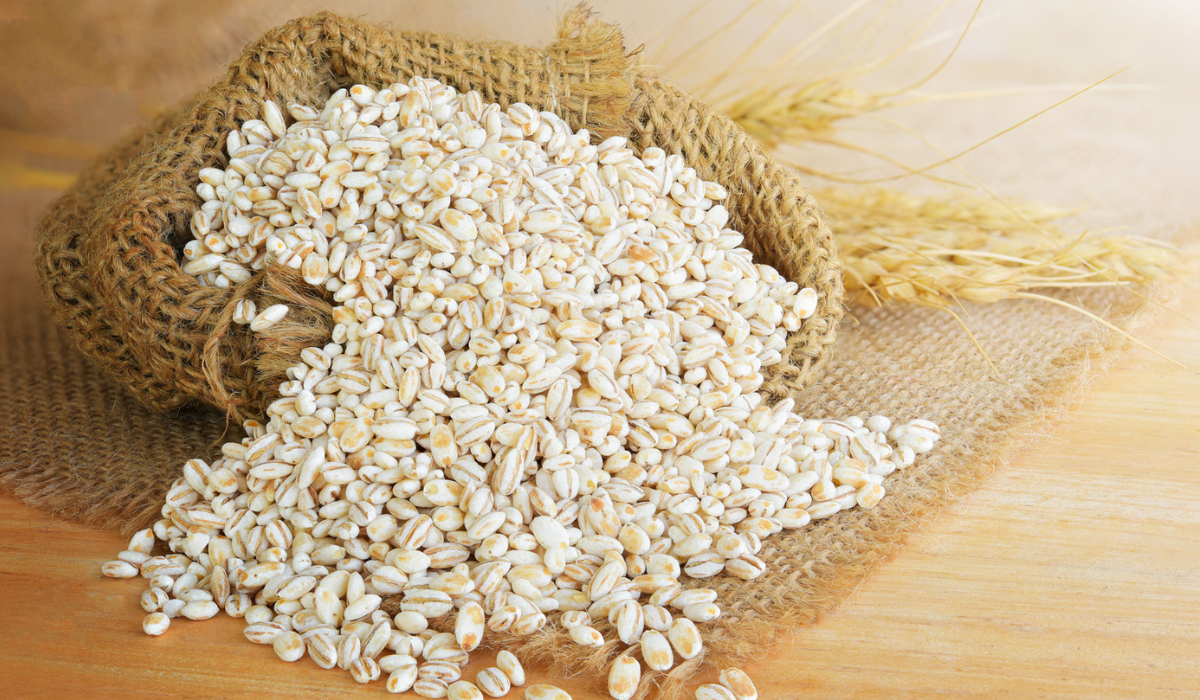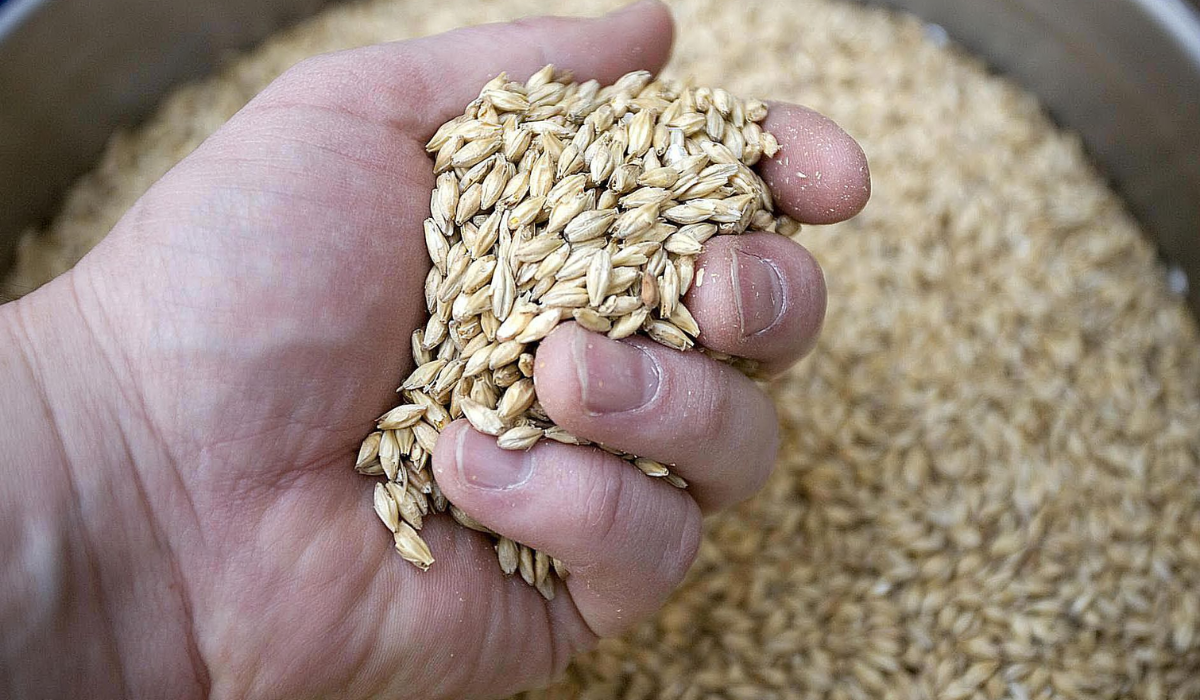Barley may be one of the well-known grains, as it is an ingredient in Grandma’s meat and barley soup and plays a crucial role in beer production. However, it has a far more varied role on the menu. It is the world’s oldest cultivated cereal and grows in various climates, making it an essential ingredient in many cuisines. It, one of the world’s top five portions of cereal, has existed since prehistoric times. This versatile grain is said to have come from Ethiopia or western Asia.
Pearl barley, the most prevalent kind in the United States, technically does not qualify as a whole grain due to the removal of the outer bran layer. It is affordable, readily available, and simple to prepare, and it may be substituted for rice in various meals. The cooking time for the whole grain from barley groats is significantly longer.
Barley Nutrition Facts
Certainly, here’s a table of the nutritional values for 100 grams:
| Nutrient | Amount per Serving | % Daily Value* |
| Calories | 354 | 18% |
| Total Fat | 2.3 g | 3% |
| Saturated Fat | 0.5 g | 2% |
| Trans Fat | 0 g | |
| Cholesterol | 0 mg | 0% |
| Sodium | 12 mg | 1% |
| Total Carbohydrate | 73 g | 24% |
| Dietary Fiber | 17 g | 68% |
| Total Sugars | 0.8 g | |
| Protein | 12 g | 24% |
| Vitamin D | 0 IU | 0% |
| Calcium | 29 mg | 3% |
| Iron | 2.5 mg | 14% |
| Potassium | 452 mg | 10% |
| Vitamin A | 0 IU | 0% |
| Vitamin C | 0 mg | 0% |
| Vitamin E | 0.2 mg | 1% |
| Vitamin K | 2.2 mcg | 3% |
| Folate | 23 mcg | 6% |
Note: *Percent daily values are based on a 2,000-calorie diet. Your daily values may be higher or lower depending on your calorie needs.
What is Barley?
It is an essential food for both humans and animals. It is grown in over 100 countries and is one of the most common cereal crops, only surpassed by wheat, corn, and rice in popularity. Although it is versatile and can be cultivated in numerous places, it is a delicate grain that must be harvested with care at all stages of its life.
In over half of the states in the United States, it grows in dry areas and those that require commercial irrigation. It is a short-season crop that matures quickly. Primary applications include animal feed, seed, and malt production.
A tiny proportion of it is utilized in food products in the United States, including bread, cookies, soups, and pilafs. Malted is used to make whiskey and beer. As a whole-grain food, it delivers numerous health benefits when consumed. It is rich in soluble fiber, can lower cholesterol and glucose levels in the blood, and is low in fat.
Taste
It has a somewhat chewy texture and nutty flavor when cooked like brown rice and farro. It serves as a neutral base for various recipes, including stir-fry, casseroles, protein bowls, and breakfast porridge.
What are the Different Kinds of Barley?
Even though there are only a few types of it, the fact is that there are many different kinds of barley because of how it can be processed.
Hulled Barley
This is the real deal. Most of the hull is left on, so the bran layer remains intact. It’s also called whole wheat. This variety of it is very nutritious and high in fiber and protein. It’s considered a whole grain in this form. It requires a longer cook time and is chewy, having a distinctive taste.
Hulless Barley
This is it that has the bran still intact, and just the outer shell or hull has been removed, and it’s still considered a whole grain.
Barley Grits
This form of barley consists of kernels that are toasted and then cracked into small pieces. This form cooks in relatively shorter periods because the bits are more diminutive. They are similar to hominy grits, buckwheat grits, or oat groats. They can be used as a side dish or made into cereal. The determinations are considered whole grains if the spirits come from hulled or hulled barley, and they come from pearl barley and are not considered whole grains.
Barley Flakes
This type of barley is similar in appearance to rolled oats. They have different levels of nutrition and fiber depending on whether they come from whole-grain barley or pearl barley. The kernels have been sliced, steamed, rolled to become flakes, then dried. They are much like quick-cooking oats and cook for a short period.
Barley Flour
This is also called a meal. It has a low gluten content, so it is slow to rise. It’s usually mixed with other flours like whole wheat if used in something that needs to increase. It can also be used as a thickener. Again, if the flour is made from hulled or hulled barley, it will be whole grain, but if made from pearl barley, it cannot be considered whole grain flour.
Pearl Barley
This is the type of it most commonly used in the United States. It is also the most processed, and it is highly processed. If you can buy tan pearl barley over white barley, tan barley is “less” processed than white barley. This barley has been refined, so they are no longer considered whole grains. It cooks faster and is a favorite for soups and stews.
It can also be used for any dish, but most of the nutritious elements have been refined. Just remember that pearl barley is like white rice—it may have great flavor but is not substantially healthy. Roughly two-thirds of its nutritional value is lost by converting it to pearl barley. Pearl barley is therefore considered a refined grain.
How to Cook Barley?
Cook pearl barley in the same manner as rice. Before serving, fluff 1 cup of it with a fork. Add two and one-half cups of liquid per cup of it. Additionally, you can use a rice cooker. Pre-soaking barley in plenty of water reduces the total cooking time. It can be pre-soaked for up to twelve hours, and soaking decreases cooking time to around 15 minutes. Barley can also be cooked in a pressure cooker; however, cook times can vary slightly between models, so be sure to follow the specific directions for your machine.
Although soup (including this variation with lentils) is likely the most common and well-known way to consume it, it can be prepared similarly to couscous, quinoa, or rice. Serve a vegetarian curry or vegetable stir-fry over it instead of rice, make a barley pilaf or a barley salad (just as you would with quinoa or rice), or add a handful to your favorite soup or salad.
Things to do with Barley
- Try it in cabbage rolls, pilafs, soups, stuffing, side dishes, and salads. Give this beet and it salad a try!
- Enjoy it as a hot cereal. Heat leftover plain it with fortified soy or milk, or use barley flakes. Top with any fruit, nuts, or seeds on hand.
- For a hearty breakfast, top leftover it with a fried egg.
- Replace ½ the all-purpose flour with the flour in the muffin, pancake, scone, waffle, and quick loaf recipes. If the batter is a bit dry, you can add more liquid.
- For yeast pieces of bread, replace ¼ of the all-purpose flour with its flour.
- Beef, mushrooms, onions, frozen green peas, sage, pepper,
- Green lentils, celery, carrots, kale, onions, thyme, lemon, pepper,
- Slivered almonds and chopped dried apricots
- Lemon zest, grated parmesan cheese, chopped sautéed kale
- Sliced cooked mushrooms and chopped parsley
What are the Health Benefits of Barley?
Here are the health benefits of barley:
- As an excellent source of fiber, it keeps the body clear of toxins. Its grass, high in dietary fiber, provides food for the beneficial bacteria in our big intestines. These bacteria aid in fermenting the barley’s fibers, producing butyric acid, the principal fuel for intestinal cells. It is extraordinarily good at preserving a healthy colon.
- IIron enhances blood volume and protects against anemia and weariness. It contributes to the healthy functioning of the kidneys and the formation of body cells. It is particularly beneficial since it enhances the body’s immune system and lessens the likelihood of catching a cold or the flu.
- Selenium is abundant in it, which helps maintain skin suppleness and protects it from free radical damage and loosening. Additionally, it helps the functioning of the heart, pancreas, and immunological system. A selenium deficit can lead to skin, colon, prostate, liver, stomach, and breast cancers.
- Its insoluble fiber produces propionic acid, which aids in lowering blood cholesterol levels. In addition to being an excellent source of soluble and insoluble fibers, experts recommend it for its naturally low-fat content and absence of cholesterol.
- It helps to manage Type 2 diabetes efficiently. However, this form of diabetes can be avoided by decreasing weight, engaging in intense physical activity, and eating a diet rich in whole grains. Therefore, these diabetes individuals should include high-fiber meals in their daily diet.
Where to Buy & Store Barley?
Find pearls at most grocery stores besides dry beans and lentils. It is also frequently available in bulk bins. Barley groats, from which only the exterior hull has been removed, may be packaged and sold as hull-less barley, but they are not as widely available. You may need to visit a health-food store or search online to find them. Changing the cooking time properly makes switching one for the other simple.
It is a great substitute for an emergency food supply because it is dry, can be stored indefinitely, and should be kept in an airtight container away from moisture and light. Refrigerate cooked it and consume it within three to four days. It is possible to freeze plain cooked for up to six months, making it a perfect addition to a quick-cook dish or beverage.
Conclusion
In conclusion, Barley is a cereal grain with a robust, nutty taste. Although hulled is more nutritious than pearled barley, both types are healthy and good sources of fiber, selenium, and several vitamins and minerals. The texture of the polished is delicate and fluffy. In addition, it is a vital component in pastes and beverages like Japanese miso and whiskey.
It is high in fiber, protein, vitamins, and minerals, making it a great addition to a healthy diet. Barley can be used in various ways, from a hearty and satisfying addition to soups and stews to a light and refreshing salad ingredient and as a base for breakfast porridge. Additionally, it is a sustainable crop that can be grown in many different climates, making it an attractive option for farmers and food producers around the world.
As one of the ancient cereals, humans consumed it for approximately 10,000 years. Therefore, the next time you have a taste for a dish that our forefathers would also have appreciated, grab some barley and get cooking! Whether you’re looking to add more whole grains to your diet or simply interested in exploring new and exciting ingredients, barley is worth considering. So next time you’re looking for a healthy and delicious ingredient, give barley a try!


